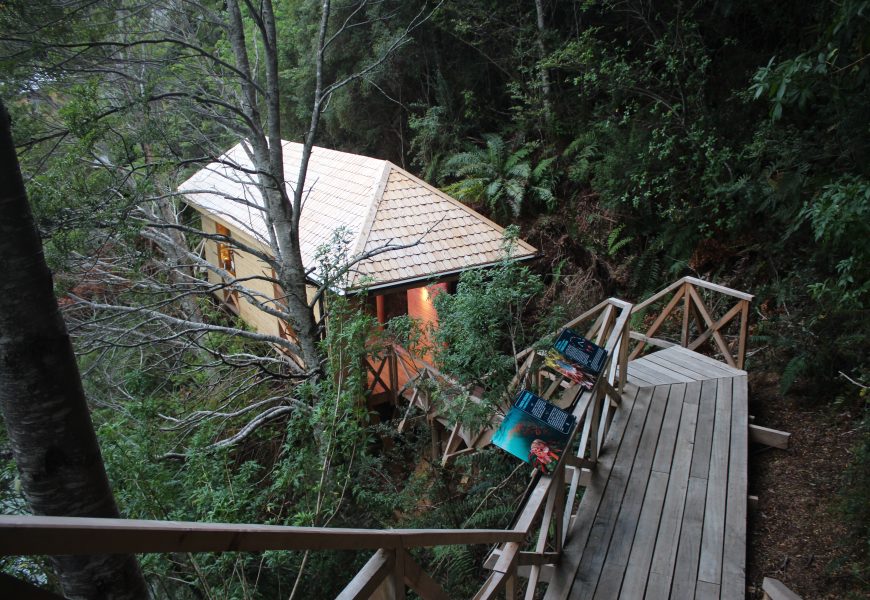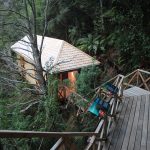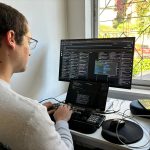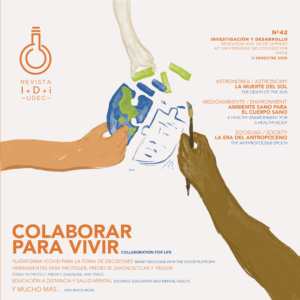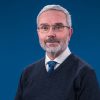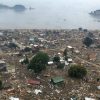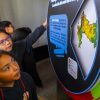By: Paúl Gómez-Canchong, Science Outreach and Education Coordinator, COPAS Coastal / paulgomez@udec.cl.
Images: Courtesy of COPAS Coastal.
Leer en español
In the extreme south of Chile, where the fjords intertwine with millenary glaciers and the ice shapes the landscape at will, is Caleta Tortel, a unique town in the Aysén Region. Without streets or cars, its urban fabric comprises wooden walkways that wind between the forest and fjord, connecting homes, schools, municipalities, and services. More than a constructive resource, these walkways symbolize adaptation, resilience, and regional identity.
Founded in 1955 as a logging enclave dedicated to the exploitation of the Guaitecas cypress (Pilgrimodendron uviferum), Tortel lived for decades at the pace of this activity. This native species, considered the southernmost conifer in the world, has a highly moisture-resistant wood of excellent durability and historical value, used for centuries to build boats, houses, and walkways in Patagonia. Due to its slow growth and overexploitation, it was protected by the Law on Native Forest Recovery and Forestry Promotion in 2008, marking a turning point. With the end of forestry as an economic pillar, the community was forced to rethink its development model. Since then, a new local story has emerged, driven by the idea of becoming a sustainable community whose pillars are tourism, education, and environmental conservation.
In the same context of local transformation, 2008 also marked a milestone for the University of Concepción in the area: the COPAS Coastal Center built the Coastal Oceanography Laboratory of Fjords and Channels in Tortel, an operational base from which it has promoted much of the scientific research generated in the region. Since then, the center has maintained an active presence in the area, developing oceanographic, ecological, and geological studies on fjords, glaciers, marine biodiversity, and climate change in this extreme part of the world. However, scientific knowledge must come from the laboratory, papers, or congresses to have an impact. And that was how the idea of creating a space that would bring this science closer to the community and visitors was born: the Environmental and Tourist Interpretation Center.
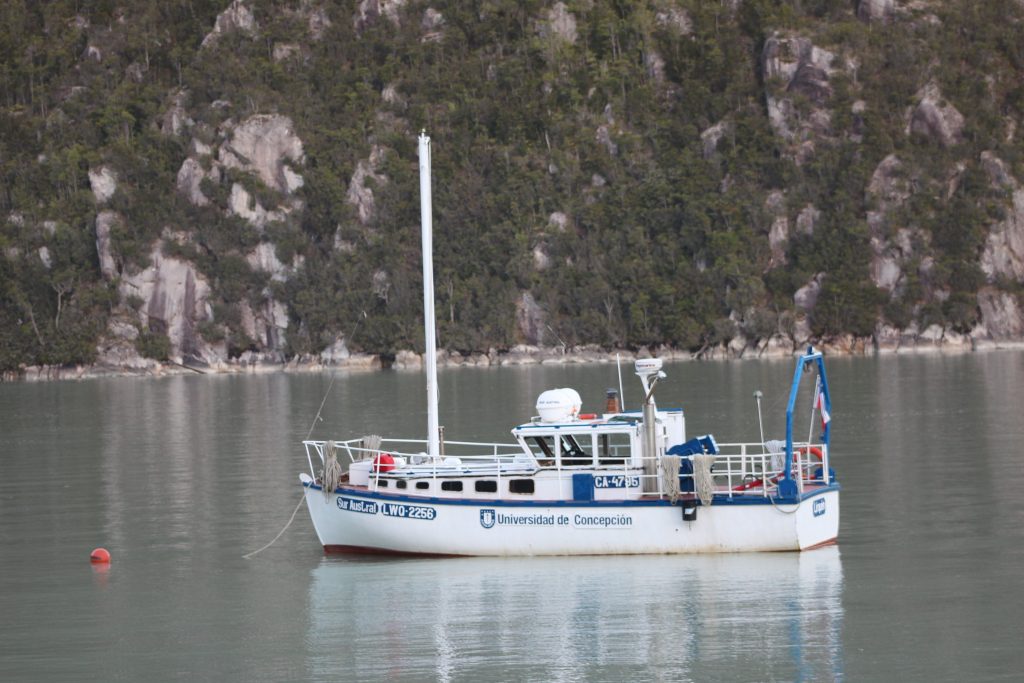
Unlike a traditional museum, the Environmental Interpretation Center seeks to connect the visitor emotionally and intellectually with the environment, using a clear, accessible narrative, adapted to the place. These centers are key to promoting sustainable tourism, generating non-formal environmental education, and articulating networks between science, community, and development.
The “Traversing between Science and Culture” project transformed a 47-meter-long disused walkway into the Environmental and Tourist Interpretation Center (CIAyT). This space invites you to discover, understand, and feel Patagonia through science, art, and local memory. Funded by the Public Science program of the Ministry of Science, Technology, Knowledge and Innovation, and developed together with the illustrious Municipality of Tortel, Trazosur, a local architecture company and UdeC, the project faced three significant challenges: building a participatory museographic script; adapting scientific content to diverse audiences, from local children to foreign tourists; and designing an infrastructure consistent with the architectural identity of a locality declared a Typical and Picturesque Area by the National Monuments Council.
The result has been widely appreciated. Tortelino, Chilean, and foreign visitors have highlighted the space’s beauty and depth and its ability to excite, educate, and generate connections with the surroundings.
CIAyT’s impact has been such that the COPAS Coastal Center was awarded a new project financed by CORFO Aysén and mandated by the Regional Government of Aysén to design a replicable model of interpretation centers in other coastal towns in the region and implement a certified training program for tour operators in ocean culture, ecosystem sustainability, and scientific tourism.
Today, while Tortel’s walkways continue to receive visitors who walk between fjords, history, and rain, one tells another story: how scientific knowledge can leave a mark beyond publications—a story of collaboration, belonging, and the future.
Last modified: 3 de septiembre de 2025
